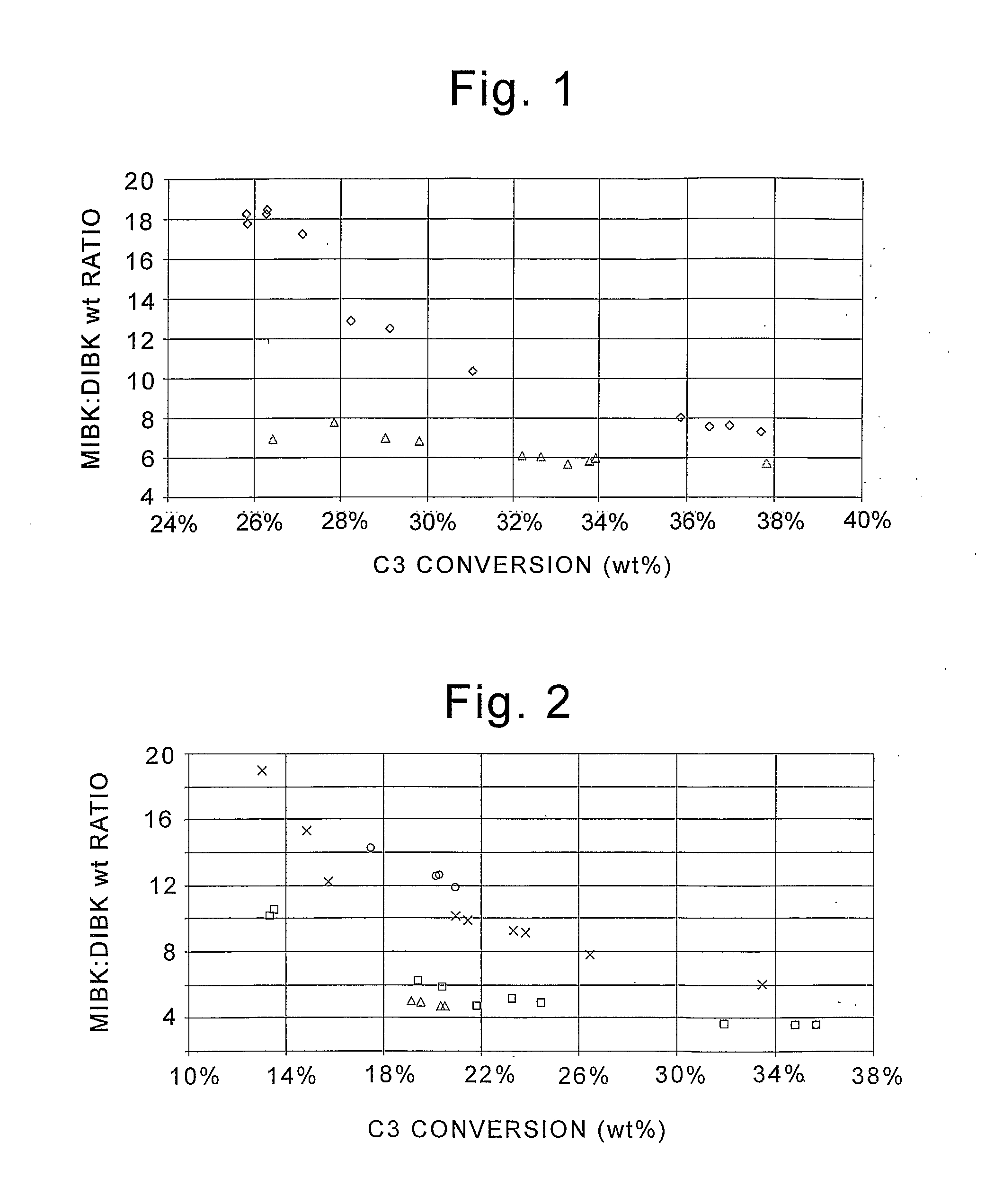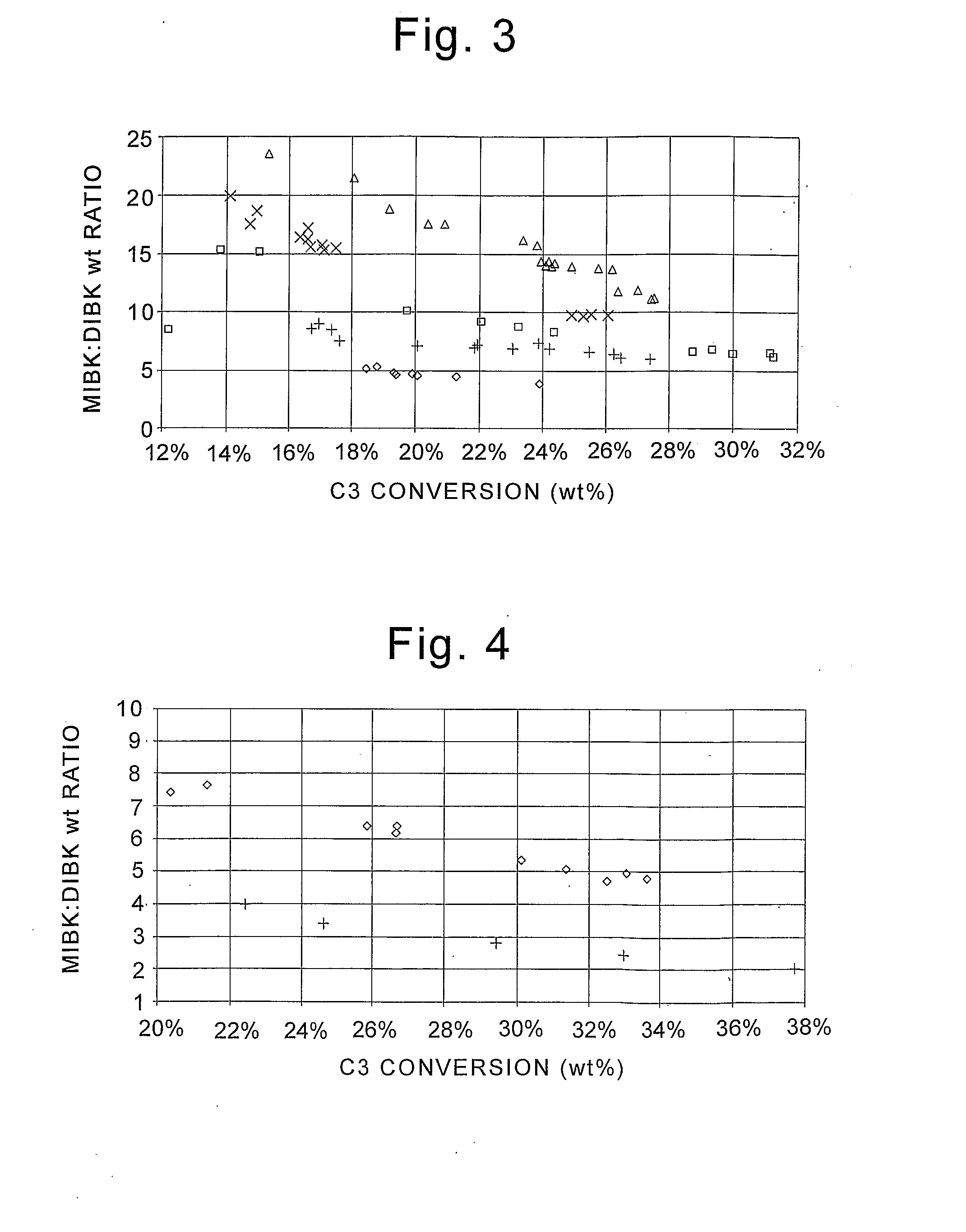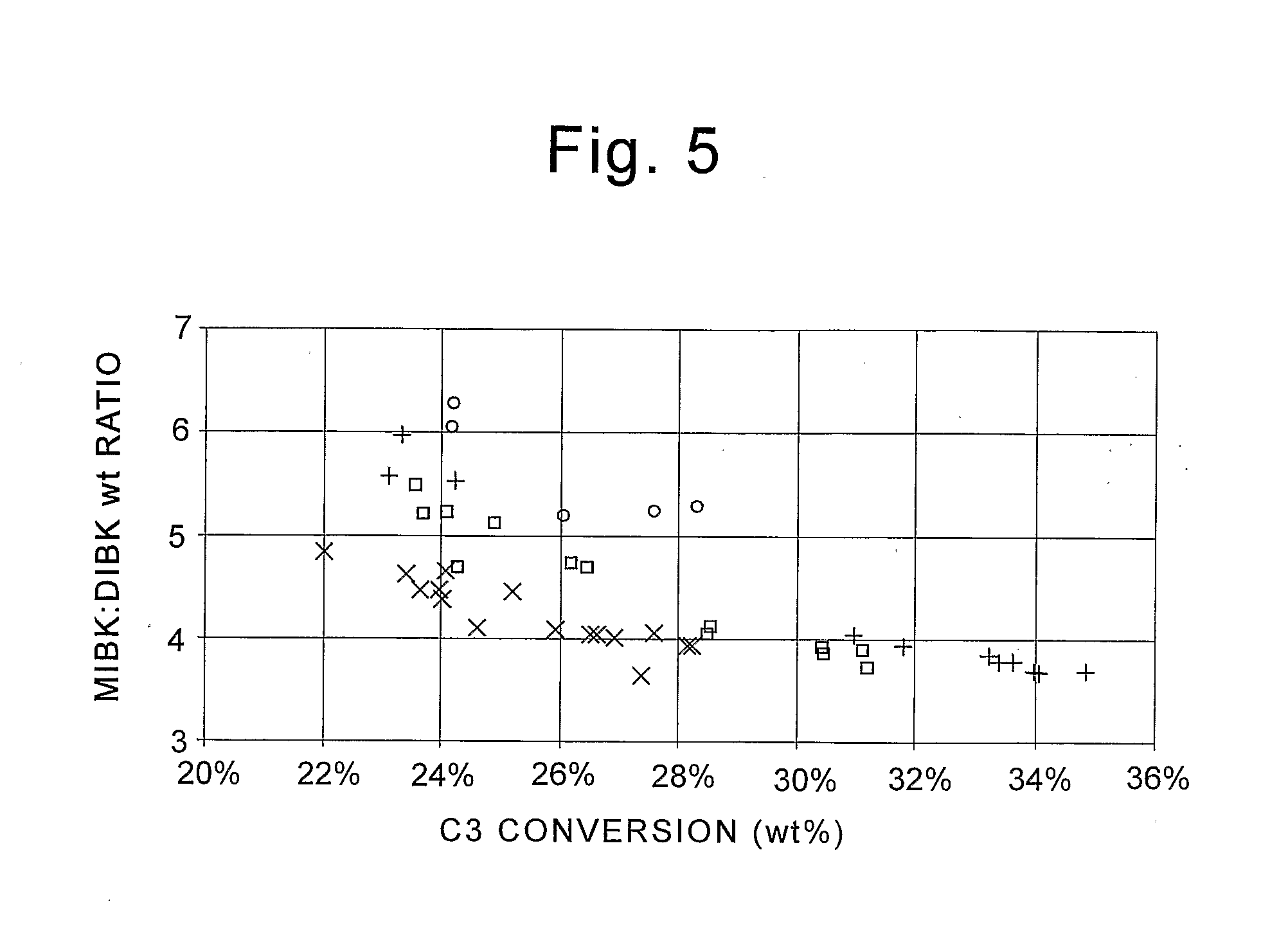Method to make methyl isobutyl ketone and diisobutyl ketone
- Summary
- Abstract
- Description
- Claims
- Application Information
AI Technical Summary
Benefits of technology
Problems solved by technology
Method used
Image
Examples
example 1
Preparation of Zirconium / Phosphate—Palladium Catalyst
[0017]75.1 g of ZrOCl2.8H2O is dissolved in 1.8 L of 1N HCl (solution A). 34.8 g of 85% H3PO4 is added to 1.6 L of distilled H2O and this mixture is added to solution A over a five minute time period. A white precipitate forms. After the addition is complete the mixture is left stirring for four hours. The stirrer is shut off and the mixture rests for 16 hours. The precipitate is then collected by filtration using a Buchner funnel and Whatman #4 filter paper. A gel is recovered and slurried in 2 L distilled water and filtered as before. This step was repeated until the filtrate pH=4. The gel is allowed to air dry under suction, isolated, and then dried at 110 degrees Celsius for 48 hr. After drying the solid is sieved to 8-10 mesh. 24.4 g of the sieved material is impregnated by incipient wetness with 0.42 g Pd(NO3)2.xH2O dissolved in 17 ml of deionized water. The resulting zirconium phosphate contains 0.7 wt % Pd, and is dried at...
example 2
Preparation of Zirconium / Palladium on Alumina; Catalyst 1
[0020]24.95 g of G55B alumina (Sud Chemie) containing 0.05 wt % Pd is impregnated via incipient wetness with 10.13 g of ZrOCl2.8H2O dissolved in 15 ml deionized water. The resulting solid is dried for 1 hour at 25 degrees Celsius and then for 16 hours at 110 degrees Celsius (° C.). The solid pellets are calcined at 450° C. in air for 3.5 hr. The final loadings based on their oxides are Zr=13.5 wt % and Pd=0.044 wt %.
Condensation of DMK Using the Zirconium / Palladium on Alumina; Catalyst 1
[0021]The reactor is charged with 20 ml of the catalyst. The catalyst is reduced at 150° C. with a N2:H2=2:1 gas mixture at 75 ml / min for 1 hr, followed by N2:H2=1:1 at 100 ml / min for 1 hour, and then H2=50 ml / min for 1 hour. The H2 flow is reduced to 38 ml / min and acetone:H2O=97:3 is fed at LHSV=1 hr−1. The reaction temperature is varied between 100-150° C. by controlling the temperature of the furnace in which the catalyst bed is positioned i...
example 3
Preparation of Zirconium / Palladium on Alumina; Catalyst 2
[0023]25.02 g of CS350 alumina (Sud Chemie) is impregnated with a total of 7.31 g of ZrOCl2.8H2O in two steps in the following way. 5.34 g of ZrOCl2.8H2O in 5 ml deionized water is added to 25 gm of the alumina. The solid is rolled for one hour then placed in an oven at 105° C. for 16 hr. The recovered solid is impregnated with a second solution of 1.96 gm ZrOCl2.8H2O dissolved in 5 ml deionized water, rolled for 1 hour, and then dried at 105° C. for 4.5 hr. The recovered solid is calcined for 3.0 hr at 550° C. The calcined solid is impregnated with 0.23 ml of 10 wt % Pd(NO3)2 in 5 ml of deionized water, rolled for 1 hr and then dried overnight at 105° C. The solid is calcined at 550° C. for 3 hr. The final loadings based on their oxides are Zr=10 wt % and Pd=0.05 wt %.
Condensation of DMK Using the Zirconium / Palladium on Alumina; Catalyst 2
[0024]The reactor is charged with 20 ml of the catalyst. The catalyst is reduced at 150...
PUM
| Property | Measurement | Unit |
|---|---|---|
| Temperature | aaaaa | aaaaa |
| Pressure | aaaaa | aaaaa |
| Pressure | aaaaa | aaaaa |
Abstract
Description
Claims
Application Information
 Login to View More
Login to View More - R&D
- Intellectual Property
- Life Sciences
- Materials
- Tech Scout
- Unparalleled Data Quality
- Higher Quality Content
- 60% Fewer Hallucinations
Browse by: Latest US Patents, China's latest patents, Technical Efficacy Thesaurus, Application Domain, Technology Topic, Popular Technical Reports.
© 2025 PatSnap. All rights reserved.Legal|Privacy policy|Modern Slavery Act Transparency Statement|Sitemap|About US| Contact US: help@patsnap.com



